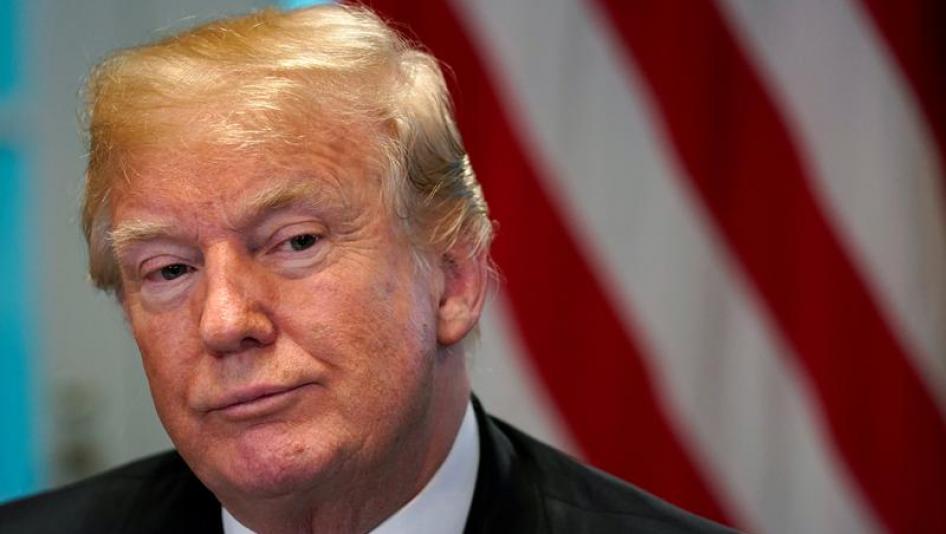During an eventful press briefing today, President Trump incorrectly claimed that in 1917, the Spanish Flu “probably ended the second World War.”
World War II began more than two decades after the pandemic in 1939.
Trump, who has shown little interest in reading history, misspoke again and probably meant to reference World War I, the final months of which overlapped with the deadly spread of the flu pandemic, which also began in the summer of 1918, not 1917.
The deployment of troops during World War I likely contributed to the spread of the 1918 flu due to crowded conditions and intercontinental movement, according to the Centers for Disease Control and Prevention.
Trump also said during the press conference that the Spanish Flu, which he referenced as the “great pandemic,” killed anywhere between 50 to 100 million people.
The 1918 pandemic, which was caused by an H1N1 virus, infected as many as 500 million people worldwide, and it killed at least 50 million people, according to the CDC.
Comparisons have been drawn between the deadly 1918 pandemic and the current COVID-19 pandemic due to its similarity in a rapid and deadly spread.
Trump says the Spanish Flu in 1917 “probably” ended the Second World War.
The Spanish Flu was in 1918 and WWII ended in 1945. It’s “probably” a good thing the Secret Service cut that press conference short. pic.twitter.com/sHQj2Uqov6
— Amee Vanderpool (@girlsreallyrule) August 10, 2020
Trump has lamented on multiple occasions that the coronavirus pandemic is the worst the world has seen since 1917.
There’s just one problem — the flu pandemic he’s referring to actually began in 1918.
This may seem like a little thing, and in a universe of Trump falsehood featuring claims about much more consequential matters such as climate change and voter fraud, it is.
But since the lessons from how governments handled the 1918 pandemic that are relevant to the coronavirus, Trump’s ignorance, in this case, has a significance beyond illustrating a shaky grasp of details — that some of his falsehoods are utterly impervious to correction.
“Who would think you could have a stock market at 24,000 after we’ve gone through the worst pandemic since 1917? That’s over 100 years,” Trump said last month, adding the next day: “Tremendous death. It was just a terrible thing, the likes of which we haven’t seen I guess if you go back over 100 years, 1917. And that was a terrible thing.”
Trump has been regularly claiming that the 1918 flu pandemic started in 1917 since he started holding coronavirus-related press briefings in March.
“Nobody’s seen this I would say since 1917, which was the greatest of them all, the greatest of this type of battle,” Trump said on April 4. “Right? 1917.”
According to a tally compiled by Susan Glasser of the New Yorker, Trump has incorrectly referred to a 1917 flu pandemic at least 27 times since March 11.
As she noted: “In a handful of instances—six, by my count—Trump referred to both 1917 and 1918, suggesting that someone had perhaps tried to give him the correct date, but he could never quite get it to stick.”
The ironic thing is that if anybody should be able to get the date right, it should be Trump.
His grandfather, Friedrich Trump, died in New York City in 1918 from the flu during the early stages of a pandemic that killed about 675,000 Americans.
Nonetheless, Trump, seemingly unaware of his family’s history, said in March, “Does anybody die from the flu? I didn’t know people died from the flu.”
Given that he makes the same false claim just about every day you’d think one of Trump’s advisers would try to correct him.
Maybe they have and it just hasn’t stuck.
Whatever the case, Trump just can’t seem to get it right.
Trump has a notoriously shaky grasp of history.
Recall, for instance, how during one of his first public events as president he described Frederick Douglass, who died in 1895, as “an example of somebody who’s done an amazing job that is being recognized more and more, I notice,” or how he regularly expresses surprise more people aren’t aware that Abraham Lincoln was a Republican.
